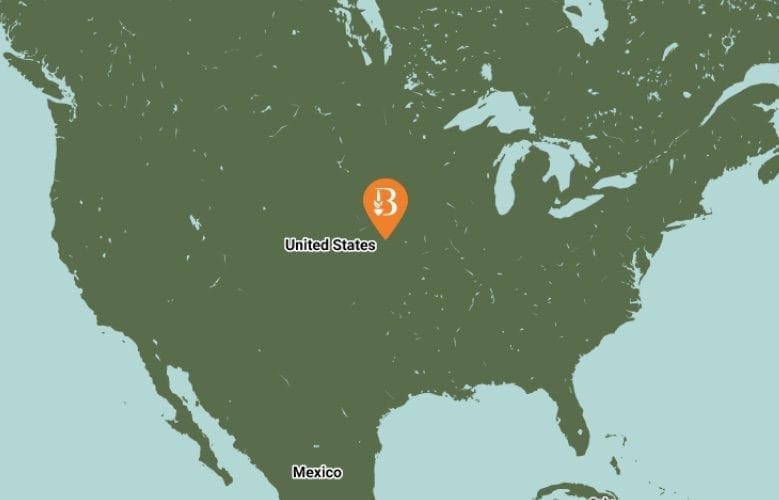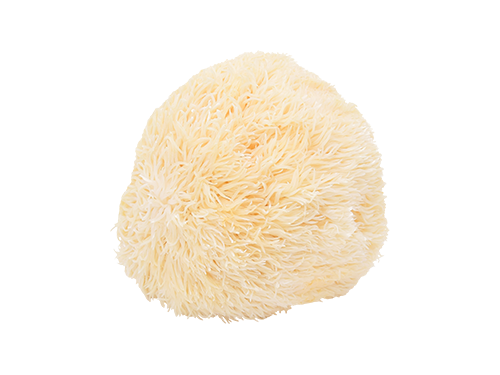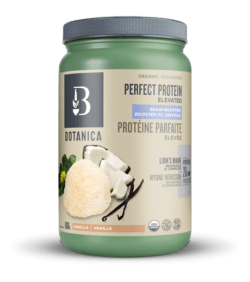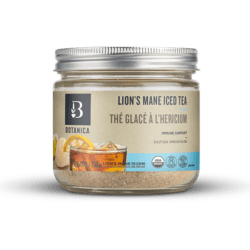Principaux bienfaits pour la santé
• Effet neuroprotecteur
• Amélioration de la cognition
• Anti-inflammatoire
• Amélioration de l’humeur
• Module la réponse immunitaire
L’hydne hérisson tire son nom de son apparence. Il ressemble un peu à un hérisson et on compare aussi souvent son aspect à celui du cerveau et du système nerveux humains. L’hydne hérisson a plusieurs autres noms courants : tête de mouton, tête d’ours, et yamabushitake, en japonais. Le nom latin de l’hydne hérisson est Hericium erinaceus, ce qui signifie « hérisson ».
Il pousse sur de nombreuses espèces d’arbres. Tout comme la pomme est le fruit du pommier, la « crinière » blanche de l’hydne hérisson est le corps fructifère du champignon. « L’arbre » est constitué d’un vaste réseau de mycélium (ou « racines ») qui s’étend sous terre et peut s’étirer sur plusieurs kilomètres.
Historic Use
Historically reserved only for royalty, it’s tender white flesh tastes similar to seafood.6 Traditionally used in Chinese medicine for stomach ailments, Lion’s Mane is effective against hepatoma cells as well as for prevention of gastrointestinal cancer. 6 Lion's mane mushrooms are increasingly studied for their neuroprotective effects. Two novel classes of Nerve Growth Factors (NGFs), neuropeptides important for nerve health, have been discovered in this mushroom so far. 3 They are being used for nerve repair, as well as improved nerve function and memory. The influence of lion's mane on neurological functions may also have other added benefits: improving mood, decreasing anxiety and depression while improving your ability to concentrate. 4 Lion’s mane has also been reported to have anti-microbial, anti-hypertensive, anti-diabetic, and wound healing properties among other therapeutic potentials. 5
Our Process
Lion’s Mane grows wild in the Olympic rain forest. A small sample is eco-harvested and then grown on organic brown rice in a controlled environment. After 4 generations it is certified organic and tested free of over 474 environmental contaminants. The budding mushroom (primordia) is harvested, freeze dried for superior nutrient preservation, and then heat treated to activate a number of the medicinal compounds and make them more bioavailable.
Provenance
Nord-ouest de la côte du Pacifique des États-Unis (État de Washington), forêt pluviale Olympic

References
Stamets, P., "Notes on nutritional properties of culinary-medicinal mushrooms." International Journal of Medicinal Mushrooms. 2005; 7:109-116.
- Hericium erinaceus: an edible mushroom with medicinal values.
- Lion's Mane: A Mushroom That Improves Your Memory and Mood?
Mori, K., Obara, Y., Moriya, T., Inatomi, S., Nakahata, N. 2011. "Effects of Hericium erinaceus on amyloid β(25-35) peptide-induced learning and memory deficits in mice." Biomed Res. 32(1):67-72.







